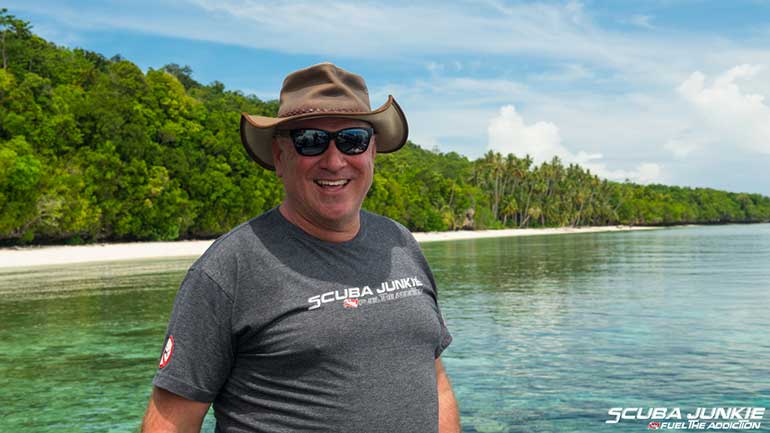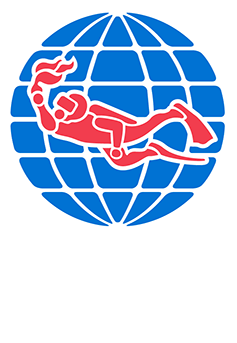As scuba divers, we all know the feeling of descending into the underwater world and realizing that verbal communication is no longer possible. The good news is that hand signals allow divers to communicate efficiently during dives. Mastering them is one of the first skills student divers learn. Knowing these gestures thoroughly before submerging is crucial for safe and enjoyable dives.
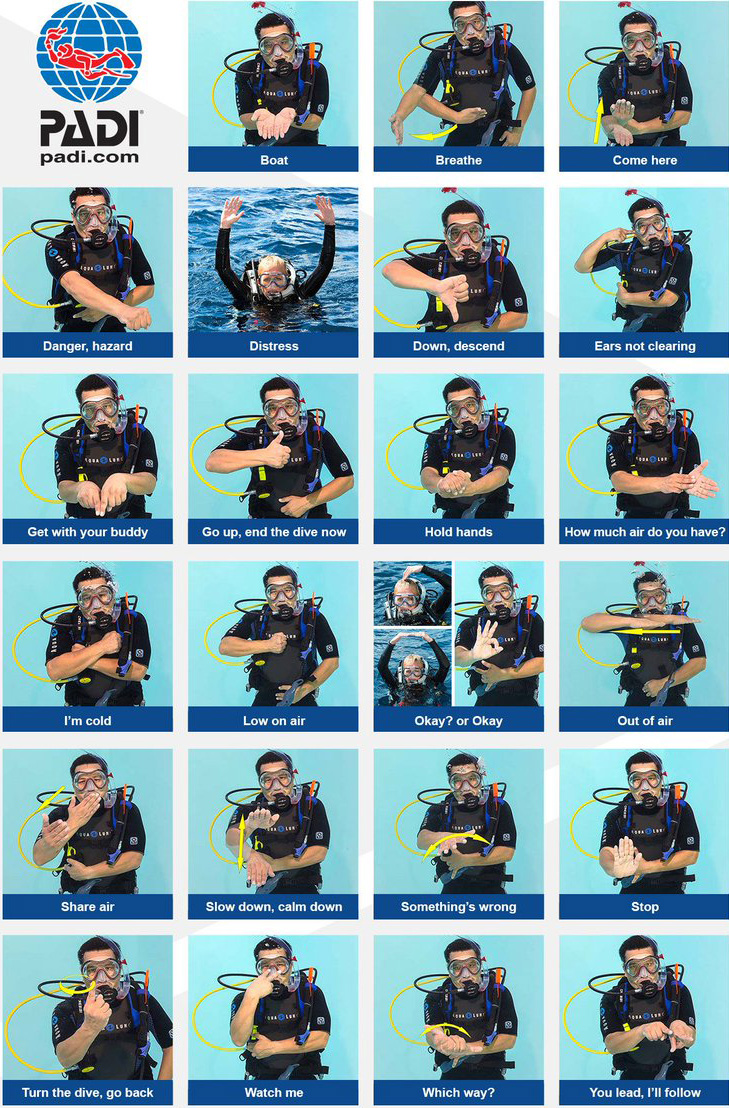
Hand signals are an essential skill that every diver must master before entering the water. They allow you to convey messages to your buddy when voice communication isn't possible, transcending language barriers and allowing divers from all over the world to understand each other. Learning them thoroughly ahead of time prevents confusion and dangerous situations underwater when you need to communicate quickly and effectively. Mastering them ensures you and your buddy have a shared understanding, even if you've never dived together before.
When executing hand signals underwater, keep these do's and don'ts in mind:
Becoming an expert in scuba hand signals doesn't happen overnight - it takes time and dedication to commit these gestures to memory. But practicing can be fun! Grab your buddy on dry land and quiz each other on key signs. Repetition helps build the muscle memory you need to flash signs smoothly once you're 20 meters underwater. Make a game out of testing yourselves so you're ready to chat easily during your dives. Before you know it, you'll be a pro!
Once you've memorized basic recreational scuba hand signals, it's time to put your skills into practice! Enroll in a PADI Open Water diver certification course from a trusted dive operator. Instructors will thoroughly review hand signals and even teach you new specialty gestures. With quality training from skilled professionals, you'll be mastering hand signals and exploring the underwater world in no time.
Want to test your hand signal skills? Reply to this article and mimic the following signals using emoji:
How did you do? Practicing hand signals like this ensures you'll be prepared to communicate underwater. Safe and fun dives ahead!

A dive computer is an electronic device used by scuba divers to monitor depth, time underwater, and decompression requirements during a dive. It provides real-time data to help divers make safe decisions and avoid decompression sickness. Dive computers contain an electronic algorithm that tracks nitrogen levels and calculates no-decompression limits.
While not absolutely required, having a dive computer is highly recommended for most divers. Dive computers provide an added level of safety and convenience compared to relying solely on dive tables or gauges. They monitor data in real time, accounting for actual dive conditions, and reduce the risk of human error in calculations. For recreational diving, a basic dive computer can suffice. Technical diving may require more advanced dive computer features.
The main features you need in a dive computer include depth and bottom time. With these, your computer can calculate your no decompression limit - the maximum time you can safely stay underwater without needing decompression stops. Some other helpful features to look for are safety stop guidance, ascent rate monitoring, surface time tracking, and dive planning modes. Although recreational divers should not intentionally go into decompression, having a computer that can show decompression stops is useful in case you accidentally exceed no-decompression limits.
Additional useful features to consider are dive modes for air, nitrox, and free diving. For more advanced tech divers, the ability to monitor multiple diving gases is an important feature. When shopping for a new dive computer, think about which features match your experience level and diving needs. The right computer will have the essential functions for safety and convenience, but you may also want to consider extras that suit your goals as you progress as a diver.
The number of buttons is something beginner divers may not consider, but it can greatly impact how easily you navigate the computer's menu.
Computers with only one button can be tricky to use. You have to click the button repeatedly to scroll through all the options, and if you miss what you need, you have to start over again.
Dive computers with multiple buttons allow for easier navigation like being able to go back, forward, up and down through the menus. This prevents getting lost or having to restart your search for a particular function.
Before deciding which dive computer to buy, try playing around with the menu structure if possible. Make sure it feels intuitive and easy to find the information you need. The layout of the buttons and menus can vary greatly between models. Choosing a computer that allows you to quickly access key data with minimal buttons pushes will lead to a much more enjoyable and stress-free diving experience. Taking the time to test different interfaces can help you find a user-friendly option that best fits your needs as a diver.
Battery life is limited, whether you choose a rechargeable or disposable battery.
With disposable batteries, you'll likely need to replace them every 1-2 years. While you can replace batteries yourself, it's best to take the computer to a dive shop. They can properly replace the battery and O-ring, often using a battery kit. The risk is running out of battery during a dive, although most computers display low battery warnings. Once replaced, the computer functions like new again.
Rechargeable batteries ensure a full charge for every dive when maintained properly. You avoid buying replacement batteries yearly. However, as with phones and devices, after the battery's lifespan (usually under 5 years), runtime per charge decreases. Eventually you'll need to purchase a new dive computer.
Both battery types have trade-offs. Disposable batteries need regular replacement. Rechargeable batteries lose efficiency over time. Consider your diving frequency, cost factors, and willingness to replace the entire computer when choosing between battery types. Testing battery life and watching for warnings is key for reliability, regardless of battery type chosen.
Perhaps the biggest advantage of a wrist mounted dive computer, specially the watch size models, is that you can wear it wherever you go. It’s easier to pack for travel and allows you to use your own computer when you rent gear. Wrist mounted dive computers are often a more stylish option than console computers, and can come with air integration and a compass.
They usually have larger, more readable screens and buttons that are easier to push. Since they attach to your regulator, you won't risk forgetting your computer behind. With everything displayed on one unit - depth, times, heading, gas data - consoles allow checking key info at a glance.
Consider your needs and preferences when choosing between these common dive computer styles. Wrist computers provide versatility and style. But consoles integrate more data in an easy-to-view layout. Think about convenience, ease of use, and how you dive to decide which design works best for you. Trying on different styles can help determine the most comfortable and practical fit.

After considering the must-have and nice-to-have features, it's time to look at budget. Today there are lots of high-tech options like Bluetooth connectivity, heart rate monitoring, color screens, GPS tracking, and smartwatch integration. It's easy to get carried away adding features if money is no object. However, with a limited budget, focus on the essential functions you need and avoid unnecessary bells and whistles.
Ask yourself - do you really require all those extras? More money spent equates to more features, but the diving necessities are most important. Those with smaller budgets will want to weigh each added feature against the cost.
In the end, an affordable dive computer with the basics like depth, time, and decompression tracking is entirely sufficient for recreational diving safety. While it's exciting to have cutting-edge tech, the latest gadgets aren't required for an amazing diving experience. By carefully considering your personal needs and budget, you can find just the right dive computer at a price you're comfortable with.
Look out for seasonal sales and discounts when shopping for a dive computer. As new models come out, you can often find great deals on remaining stock of older models. Watch for sales around the holidays like Black Friday for potential savings.
Consider buying used from a trusted source. Sites like eBay or scuba swap shops can connect you with lightly-used computers from other divers upgrading their gear. Ensure the computer is in good condition and has been recently serviced before purchasing used.
Rent before you buy. Many dive shops offer computer rentals for a small fee. Renting first can help you try out different makes and models to see which interface and features you like best before investing in your own.
Start with an entry-level computer, then upgrade later as your needs evolve. As a new diver, an advanced tech computer may be overkill. Begin with an affordable model with the essentials, then you can upgrade to more advanced dive computers as you progress.
By taking advantage of sales cycles, buying used, renting, and starting simple, you can find a quality dive computer that fits both your diving needs and budget. The right gear is out there with a savvy purchasing approach.
Choosing the right dive computer involves considering your experience level, diving environment, must-have features, and budget. By outlining your needs, you can narrow down the choices and find a computer that fits your diving lifestyle. Try on different styles and test interfaces when possible. Read reviews from other divers using the models you are considering. Invest in a computer appropriate for where you are now as a diver, but also one that will grow with you as you progress.
Once purchased, be sure to fully read the manual to understand your computer’s capabilities and how to operate it safely. Perform pre-dive safety checks on battery life, oxygen sensors, etc. With proper care and maintenance, your new dive computer will become a trusted underwater companion for many adventures to come.
What dive computer do you use and recommend? Share your thoughts and experience in the comments below!
If you thought you've seen amazing things during your day dives, wait until the lights of the torches take you to the unreal experience of the Night Dives in Mabul.
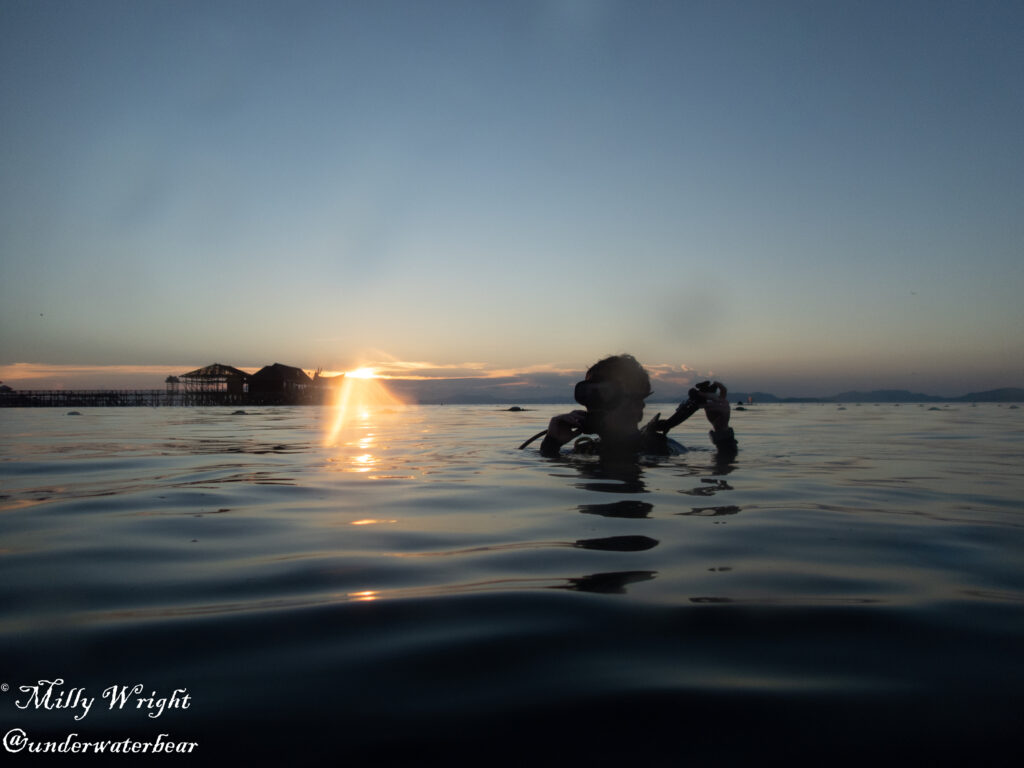
When the lights of the sun start fading. When the sounds and movements of the day slowly give way to the peace and silence of the dark. When the boats turn off their engines and rest until the new dawn. At this exact moment, something changes underwater. Sand and sea grass might not sound so appealing to you but it's home to the most particular and unique critters (Muck diving).
And at Scuba Junkie, we have it right out of our jetty. Let your imagination run wild, while I tell you the story of, so far, my best Night Dive.
It was the end of a long week teaching courses, and as much as I like to teach it can also be exhausting. I'm not going to get into details, but mentally I had a lot happening, and fiscally I was tired.
I'm halfway through the day and it's now lunchtime. On my way to the restaurant, I see the torches laying on the counter of the dive center and somehow I felt them calling me.
I tend to follow my feelings, in general, that's where all my adventures begin. I knew I had to go for it, what I didn't know was that this was going to be the most wonderful Night Dive I had so far.
The sun is setting, my customers arrived, I welcome them and start the briefing. I explain the topography of our dive site Awas, and let them know my plan for the night dive; head all the way to “the nets” nonstop where a Rinhopias it's living at the moment, and then slowly make our way back. We all agreed and at the end, like usual I ask what are they expecting to see, which I regrated a few seconds later.
Their expectations were high, they wanted to see the most difficult creatures to find, some of which I'd only heard about it. I started laughing, I could not help it, and told them I was going to do my best but could not promise anything, except for the Rhinopias.
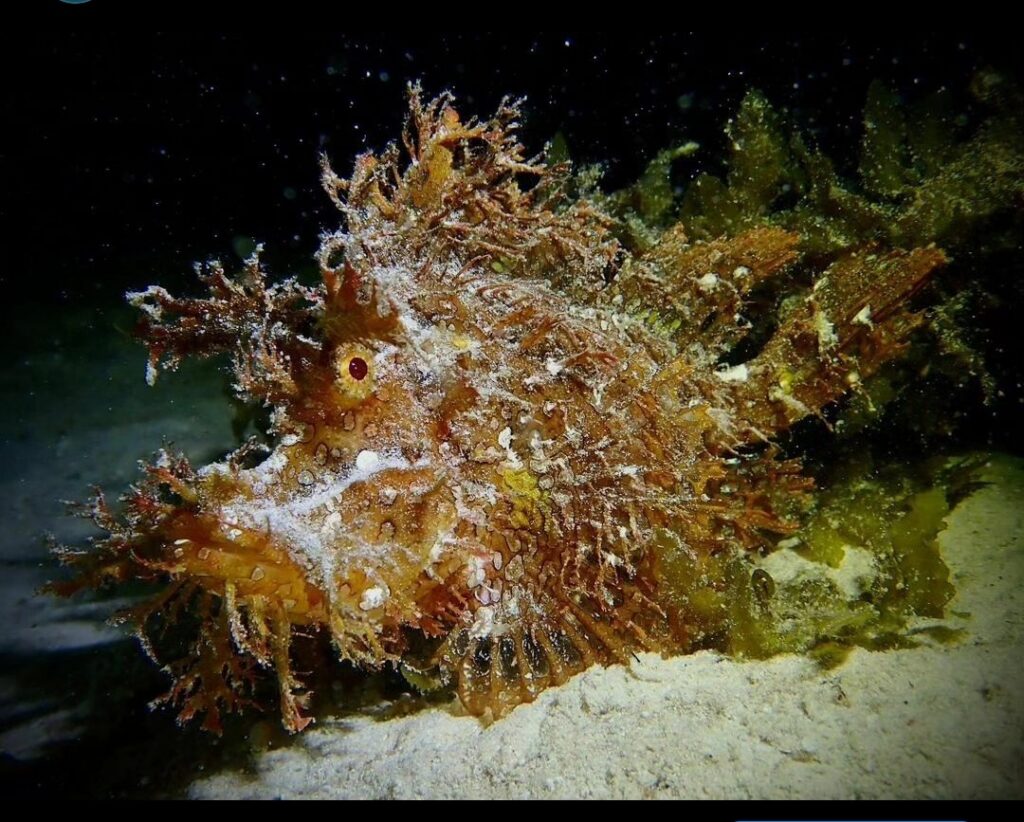
In between jokes, the sun starts hiding behind the resort, we gear up, get in the water, turn our torches on, and begin our dive. As usual in a shore dive, we started the dive against the current, which that night was a bit stronger than I expected. I follow my plan, and reached the destination.
There she was, the beautiful Rhinopias, mission accomplished. My day was already better, everything after that was a blessing.
I turn the dive and ask everyone their air pressure, all good, they're coping well with the current. Started making our way back and we found not one but two Ambons scorpionfish, that were having a bit more trouble with the strength of the water that day.
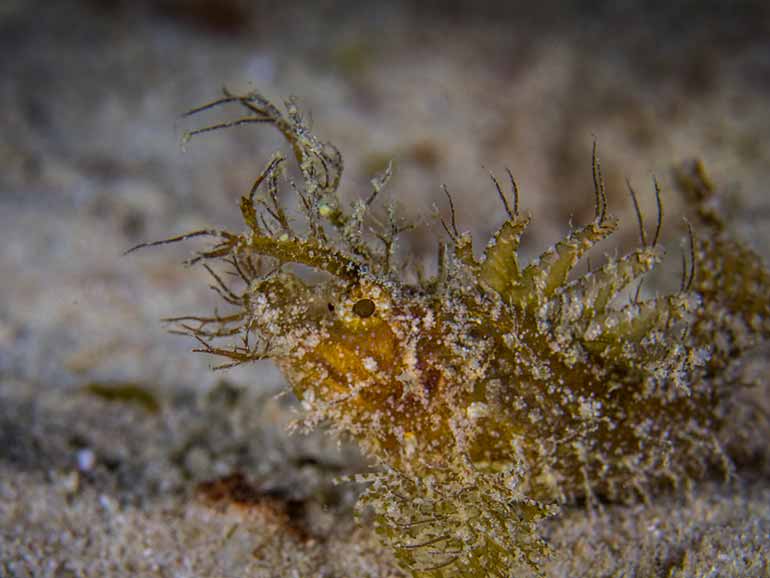
I was getting super excited! Turn around to keep going and the light flashes into a Coconut octopus, who was hanging out with his friend Mr. Wonderpus. It's this even real? Just when I thought it could not get any better, Bobtail squid, one of the cutest creatures in my opinion. And this doesn't stop here, getting closer to the jetty a painted Frogfish. Everything request was delivered, and even more. I could not believe my eyes, my luck, my night dive!
The stress, tiredness, problems, everything accumulated in one week was gone in a 60 minutes dive. Never underestimate the power of a peaceful Night Dive. Watching the beauty of the nocturnal creatures under the spotlight of the torch connects you to the moment. There's nothing else, You, your torch, the bubbles, nature, and of course your buddies. We all got out of the water with the biggest smiles, shiny eyes, with memories that will stay with us for the rest of our lives.
Open Water or Advanced, beginner or experienced diver, we will take you on this adventure with the passion that all staff in Scuba Junkie has for diving. As well as me, my colleagues also enjoy every moment underwater and the best part it's that we love to share it with our customers. We want you to leave Mabul Island not only with nice holiday memories but also with a once in the life type of experience. Give you a taste of what we're so lucky to experience almost every day.
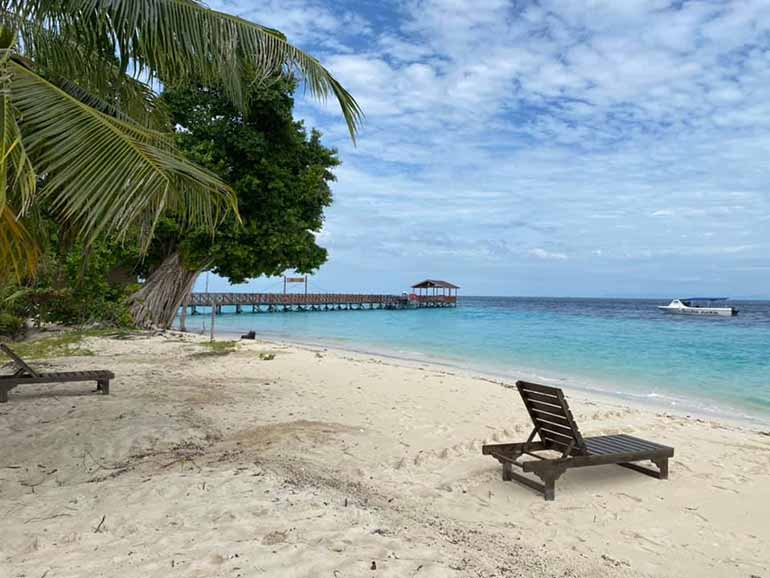
PADI Discover Scuba Diving experience. Join Cintia on her journey from beginner to Scuba Instructor.

I'm a girl from the countryside in Argentina, raised surrounded by cows and living 800km from the nearest beach, the ocean was something very scary. At the same time, I've always felt fascinated by this enormous blue magical mass of water. So when my dad suggested on a family holiday that we could go to the sea and try a Discover Scuba Diving (DSD) I didn't hesitate for one second. So many years have passed since that day but I still remember every moment.
We started very early in the morning, first things first, filling up all the paperwork. Followed by checking the equipment, BCD(buoyancy control device), wetsuit, fins, and mask. Once everything was set up we had a briefing about the basics we needed to know to go underwater. Breathing and equalization techniques, signals and communication, and the functioning of the equipment.
One by one we started gearing up and going to the swimming pool to perform some skills before the actual dive. I was very nervous, my heart was beating so fast, and my hands were shaking, but I really wanted to do this so off I go to the water. I'm floating at the surface with all the gear on, feeling scared and excited, a rollercoaster of emotions. The instructor starts deflating my BCD and little by little I started sinking.
My first breath underwater. I almost cry, not only was I excited but also so proud of me for being able to do something so challenging! There I am performing the skills needed, with total ease, to go later to the ocean. The first test passed, time for the real thing.
So out of the swimming pool and short walk to the beach, where the boat was waiting for us. Coming closer to the dream that it's kind of becoming a nightmare, the stress starts rising. The boat was not a problem but I'm more of a river person, and the ocean truly scared me.
After ten minutes we arrived to the dive spot I jumped into the water, I'm in front of my instructor, and we are starting to descend, second breath underwater? I don't think so! I panicked completely, was I going to give up? Definitely not. So I go for a second time and guess what? this time I succeeded! And it was the most wonderful experience, so amazing that I made this my profession. That day, at sixteen years old I decided that one day I was going to become a professional diver.

Ten years later, few more DSD, and many certifications my teenage dream became true, another five years have to pass to find myself working in one of the top ten diving places in the world, Sipadan, in the company that today I call home Scuba Junkie.
Today it's me who takes people for their first breath underwater and what better place to do it than at Scuba Junkie Sipadan. Here on a Discovery Scuba Dive (DSD), you can get an introduction to this wonderful blue world, you can choose to take two or even three dives and appreciate a variety of marine life that I haven't seen in my seven years of diving, just outside of our jetty (and I've been diving in all the continents). Turtles are almost guaranteed in all our dives, with no need of taking a boat and the corals are still healthy in this isolated part of the world. The water is warm and clear, perfect to make bubbles all year round.
After your first breath underwater I can promise you will get addicted to it, and the good news is, we are here to fuel your addiction.
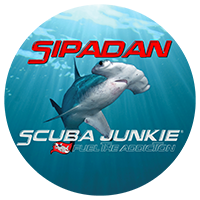
I am going to be honest. I got into wreck diving almost by accident. I have always chased beautiful coral reefs and kind of snobbed wrecks a little bit. I just thought they were a mass of iron in the sea, really.
But that was until I moved back to Italy for a couple of years, where there is an abundance of wrecks and a scarcity of corals. I had no choice other than diving those wrecks, but that gave me the time to really appreciate them: the history they carry, the sheer amount of marine life in them, and the beauty and magical atmosphere they hold.

So, when during my instructor development course and MSDT preparation (Master Scuba Diver Trainers need to be able to teach at least five specialties) I had to choose the specialties I was going to teach, it really was a no-brainer: I 100% wanted to be able to offer the Wreck Diver Course.
It is now perhaps my favourite specialty to teach because it entails a lot of planning, visualising, and challenges in terms of diving skills.
Penetrating a wreck can be a pretty steep learning curve: your buoyancy needs to be always super controlled, your knots need to be on point, mapping and navigation skills are also a crucial part of wreck exploration, as well as bringing with you a redundant air source. However, it is such a rewarding feeling to successfully complete your first penetration dive; and frankly, you look pretty badass doing it too.
And not only that, by boosting your diving skills you will feel more confident for the next diving adventures that lie ahead of you.

Here on Mabul we have a lovely wreck, which is perfect for the Wreck Diver Specialty! It is called Paradise and it is a series of sunken boats of different sizes: four smaller speed boats and one bigger decommissioned police vessel.
If you are wondering what the course consists of, let me explain it to you!
After completing the theory, there are four training dives. In the first one, you will learn how to navigate to and from a wreck, and identify points of interests as well as potential hazards. From the navigation, we will move into the mapping portion of the course during the second dive. You will effectively map the wreck and locate possible entry and exit points. The third dive will focus on practicing laying the penetration line outside the wreck (and before that we’ll have some dry runs too!), whilst in the fourth and final dive you will actually lead the penetration of the wreck: you’ll plan, navigate, bring a redundant air source, lay the penetration line and lead the penetration itself.
They say you will never forget your first underwater breath… but I can assure you, you will not forget your first wreck penetration either!

Are you looking to become a certified scuba diver and explore the incredible underwater world? If so, the PADI Open Water Course is the perfect place to start. And there's no better place to take it than in Malaysia!
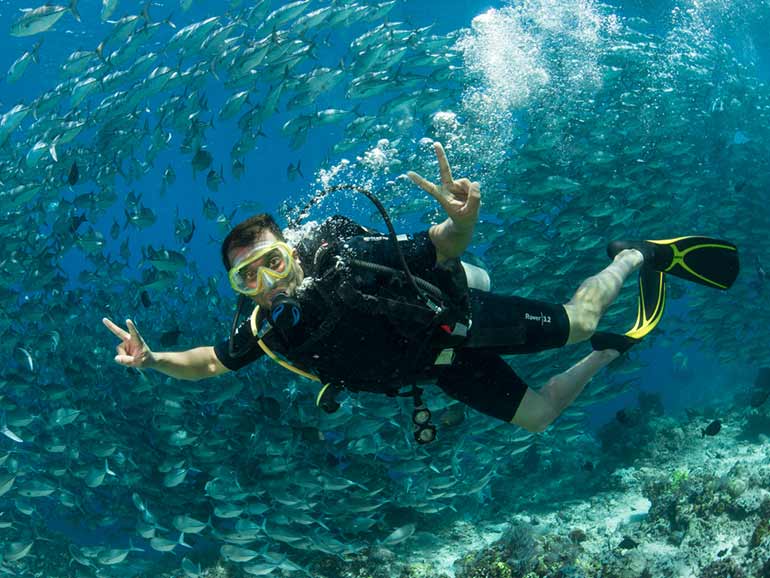
It's the first step to becoming a certified diver: The PADI Open Water Course is the entry-level certification for scuba diving, and is recognized worldwide. It will teach you the basic skills and knowledge you need to safely dive to a maximum depth of 18 meters (60 feet) under the supervision of a dive professional.
It's a fun and exciting adventure: Scuba diving is a thrilling activity that allows you to explore the underwater world and see marine life up close. The PADI Open Water Course will give you the skills and confidence you need to dive safely and enjoy this amazing adventure.
It's a great way to meet new people: The PADI Open Water Course is a social activity that allows you to meet new people and make friends with similar interests. You'll be diving and learning with a small group of people, and many people make lasting friendships through scuba diving.
It's good for your health: Scuba diving has been shown to have numerous health benefits, including reducing stress, improving mental clarity, and increasing cardiovascular fitness. The PADI Open Water Course will teach you how to dive safely, so you can enjoy these benefits while minimizing any risks.
It opens up a world of travel opportunities: Once you have your PADI Open Water certification, you can dive anywhere in the world where it's safe to do so. This opens up a whole world of travel opportunities, and allows you to experience the underwater world in a whole new way.
Overall, the PADI Open Water Course is a great way to learn how to scuba dive safely and have fun doing it. Whether you're looking for a new hobby, an exciting adventure, or a way to meet new people and travel the world, scuba diving is a great choice.

With its crystal clear waters, colorful coral reefs, and diverse marine life, Malaysia is a premier destination for scuba diving. And with its affordable prices and accessible dive centers, it's the perfect place for both beginners and experienced divers to learn and explore.
Malaysia is home to a wide variety of marine life, including colorful coral reefs, schools of tropical fish, and even turtles and sharks. Scuba diving is a great way to explore this amazing underwater world and see these creatures up close.
Malaysia is a popular scuba diving destination, so there are plenty of dive centers and instructors available to help you get started. Whether you're a beginner or an experienced diver, you'll find plenty of options to suit your needs.
Malaysia is generally a very affordable country, and scuba diving is no exception. You can find good deals on dive packages and equipment rentals, making it an accessible activity for travelers on a budget.
Malaysia has some of the most beautiful scuba diving spots in the world, including the crystal clear waters of Sipadan Island, incredible macro life in Mabul and Kapalai, and the stunning coral reefs of the Kota Kinabalu Islands. After you've seen the underwater world, you can also explore some amazing land trips, whether it be experiencing the oldest rainforest in the world, cruising the Kinabatangan river, or climbing Mt. Kinabalu - the highest peak in Borneo!
In addition to the amazing marine life, scuba diving in Malaysia also offers the opportunity to learn about and experience the local culture. There are many cultural experiences to discover, such as visits to local villages or temples, as part of their packages.
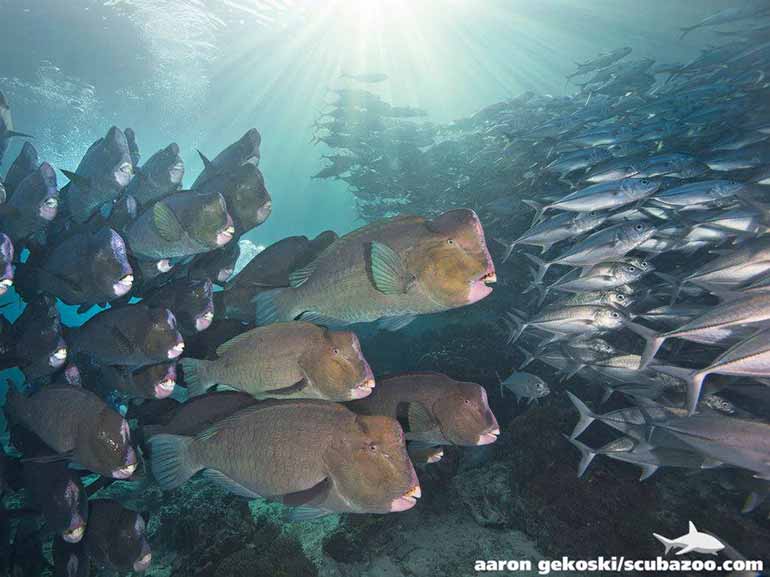
Scuba diving in Malaysia is a unique and exciting way to experience the beauty and diversity of the country. Whether you're a seasoned diver or just looking to try something new, Malaysia has something to offer for everyone.
In the PADI Open Water Course, you'll learn the basic skills and knowledge you need to dive safely to a maximum depth of 18 meters (60 feet) under the supervision of a dive professional. You'll also have the opportunity to meet new people, experience the local culture, and enjoy the numerous health benefits of scuba diving.
So why wait? Start your journey to becoming a certified diver in the beautiful waters of Malaysia. You won't be disappointed.
Do you love the ocean and sharing your passion with other like-minded people? Do you wish your office was full of white sand and turquoise water? Are you ready to turn your passion for diving into a real career? Then you should sign up for the PADI Instructor Course and become a Scuba Diving Instructor! Our next IDC dates are coming up soon; from the 21st November - 2nd December 2022, and here's why we think you should sign up right away....
The decision to become a dive instructor can be a very difficult one. With so many choices of locations, lengths and internship styles out there it can be tricky to know where to start. Here at Scuba Junkie we offer a range of different options for the PADI Instructor Development Course, all of which are designed to not only give you the tools to pass your Instructor Exam, but to also become an amazing instructor after the course is over!
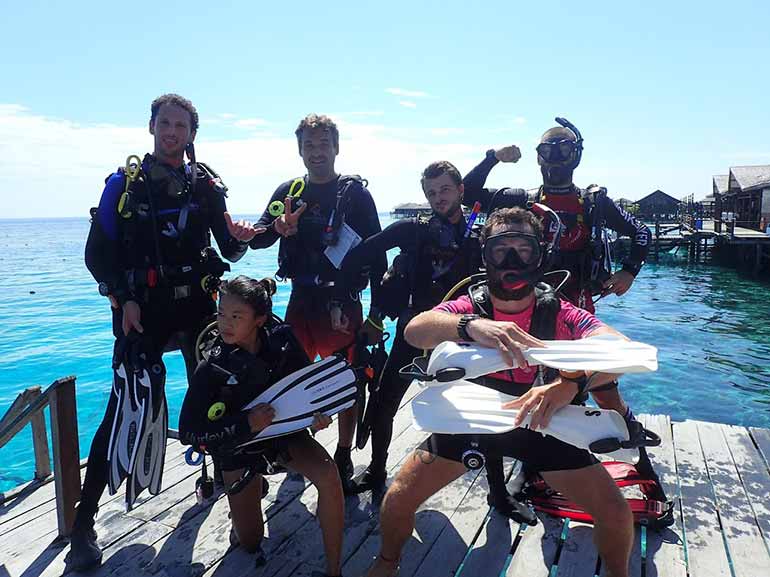

There are no right or wrong reasons for wanting to become a dive instructor. Many people have different reasons for wanting to take the course. Below are some of our personal favourites!
As a scuba diving instructor, you will spend a big part of your work-day underwater. You'll get to do what you love each day, and you'll get to introduce the incredible underwater world to others. Many of them will fall in love with the ocean just like you- and just like we did once... Watching the smile on your student's faces as they blow their first bubbles, see their first sea turtle, or come face to face with a whale shark - it's hard to explain the feeling but we can't think of much else that comes close to the same happiness!
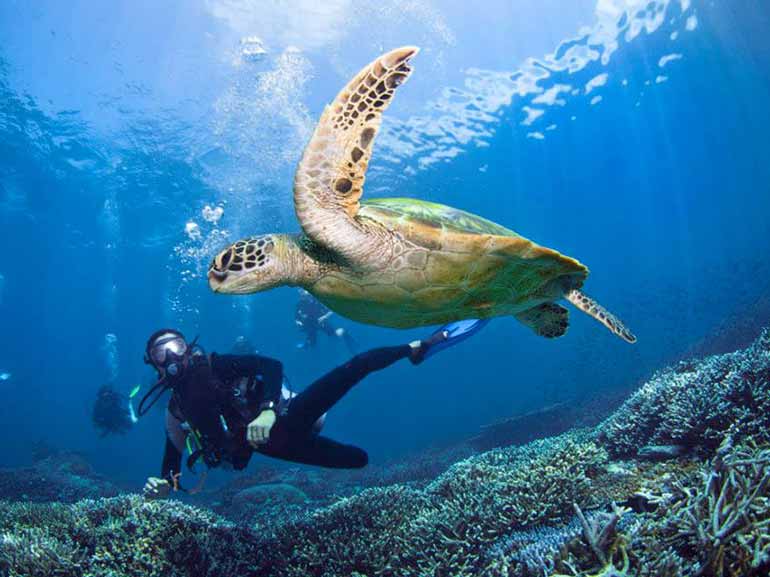

There's no denying that scuba diving can drastically change your life. As an instructor you have the perfect opportunity to inspire others to live the life they dream of, and to overcome their fears and anxieties. For some it may help them become more confident in their daily lives. Some may catch the diving bug and have their holidays forever changed. Some may be inspired to live a more environmentally friendly life and work to protect the oceans, and some may even follow in your footsteps and pursue a diving career themselves.
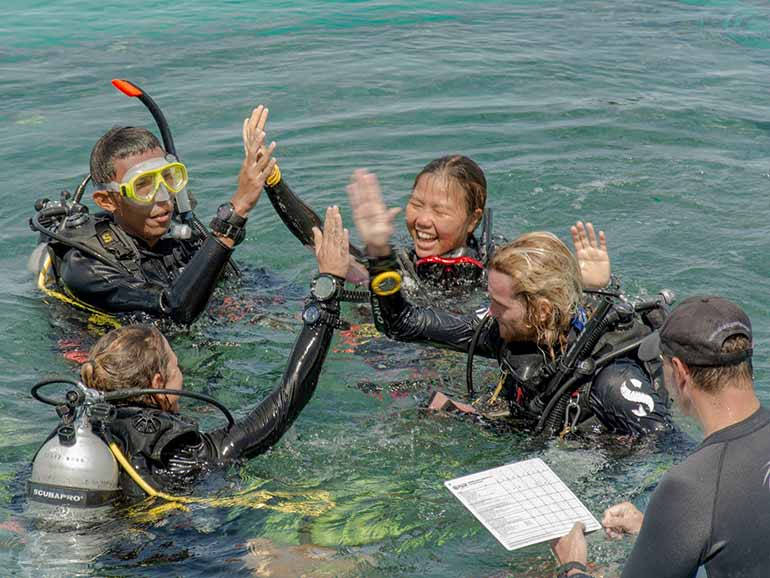

As a scuba diving instructor, you'll be able to work in places others only dream of visiting. PADI is the most recognized dive agency in the world, so wherever you prefer to dive- whether it’s on tropical reefs, mountain lakes, or fresh water rivers, the PADI instructor certification is your golden ticket to the world!
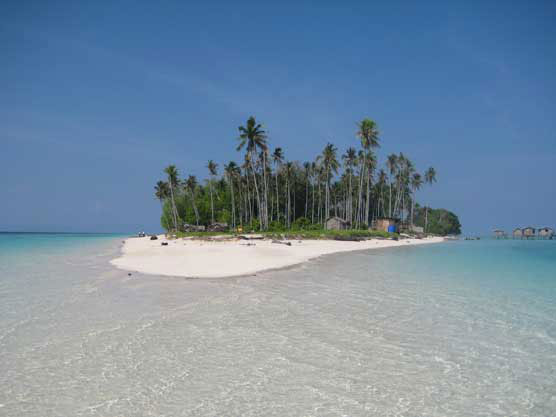

We have been running IDC's from our Mabul Beach Resort for over 12 years, and we have a 100% success rate! You'll be taught by award-winning PADI Course Director Thien X. Do, who have taught thousands of people teach other people how to dive! We also have a fantastic team of experienced in-house instructors, who are more than happy to offer guidance and advice.
At Scuba Junkie, we keep IDC classes to a maximum of 10 people - with the average size a lot smaller - meaning each student gets the personal attention they need throughout the course. We believe the IDC should do more than just teach you how to pass the course, and we are dedicated to making you a responsible dive instructor with all the means to continue a successful career afterwards.
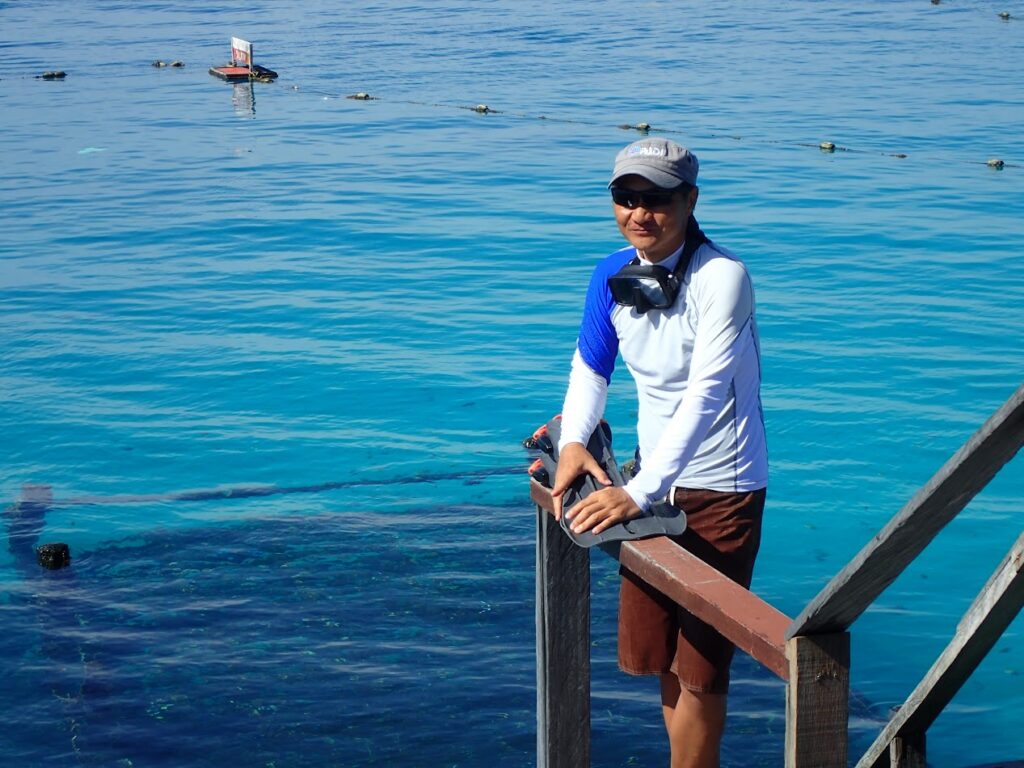

Scuba Junkie was founded by divers who are passionate about the marine environment. We believe that as divers and snorkelers, we are fortunate to be able to experience the joy and beauty of the underwater world, and that it is our responsibility to protect and conserve what we see. We run a range of different conservation projects which you can get involved with, from our on-site Mabul Turtle Hatchery, community outreach, regular beach and reef clean-ups and several yearly week-long conservation weeks.
By choosing Scuba Junkie, you will be learning how to teach diving at a dive centre who is committed to making the ocean a better place, and we want nothing more than to share our passion with you!
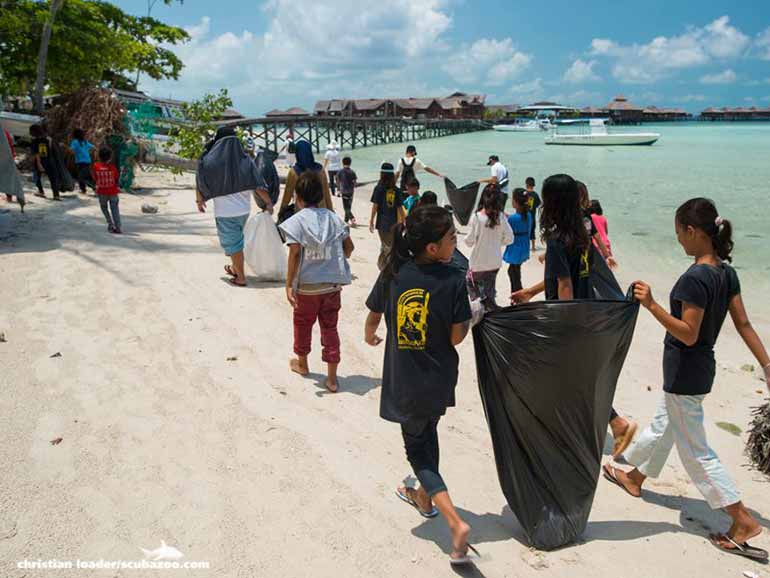

Without bias, the diving in this area is simply world-class! Just off our jetty, where you will be fine-tuning your underwater skills, you can see an incredible range of creatures – from huge green turtles, schooling reef fish, frogfish, flamboyant cuttlefish and blue-ringed octopus.
And of course, just a short boat ride away you'll find Sipadan Island, commonly voted one of the best dive sites in the world. With hammerhead sharks, schooling barracuda and jackfish tornadoes, stunning drop-offs and thousands of turtles, Sipadan is truly deserving of its' title "world's best dive site".
We offer all IDC candidates a special 25% discount on our Sipadan packages! This is a great way to get those last few dives logged before your IDC, or treat yourself to some spectacular dives after passing your IE!! We promise you won't regret it....




We offer both 1 month, and 3 month internships designed to give you valuable real life experience.
Once you receive your instructor rating, subject to our instructors approval, you will be able to work towards certifying your very own 25 students, have hands on experience at an award-winning dive centre and increase your employability! At Scuba Junkie, we are always on the look out for enthusiastic, dedicated dive professionals to join our family. If you excel during your internship, don’t be surprised if you are approached by our dive managers to discuss potential career options with Scuba Junkie!
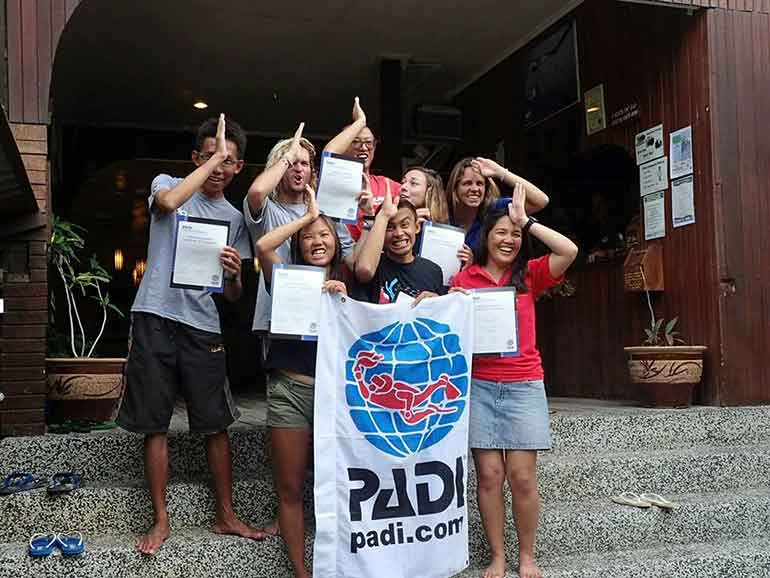

PADI Instructors are the most sought after dive professionals in the industry. As a dive instructor, you’ll be able to share your passion for the ocean and transform other people’s lives for the better, all whilst doing what you love every single day! Start a career that is unique, rewarding, lots of fun, and that allows you to work in exotic locations all over the world. If you love people, scuba diving, and want to lead an extraordinary life - become a PADI instructor with Scuba Junkie!
The moment we have been waiting for for more than 2 years is finally here! Since the first of April Malaysia has opened it's international borders and is once again welcoming travellers from all over the world! The travel will be quarantine free, and you do not need to take any pre-departure or on-arrival tests, meaning you can head straight back to your favourite dive sites (Sipadan of course...?) without delay!
In this blog post we will cover all the entry requirements you'll need to know to travel to Malaysia! The border opening just so happens to coincide with the best time of year to dive in Sipadan, so keep on reading - it is time to plan your next dive holiday!


Fully vaccinated and children aged 12 and below are exempted from pre-departure and on-arrival tests.
Partially or not vaccinated travellers must take an RT-PCR test 2 days before departure and a supervised RTK-Ag test within 24 hours of arrival. They will also have to quarantine for 5 days.
Covid-19 insurance is no longer required for all travellers entering Malaysia.


The official contact tracing app in Malaysia is called "MySejahtera". The app is used to check in at public facilities such as hotels and restaurants via a QR code, and it contains your vaccination status. You must download and activate the MySejahtera contact tracing app and fill up a pre-departure form in the app (1-5 days before departure) via the following steps:


Face masks are mandatory indoors, including public transports and taxis.
Masks are optional when outdoors but encouraged in crowded places. High risk individuals are also encouraged to wear a mask.
Physical distancing is no longer required but encouraged when not wearing a mask.
By default, Covid-19 positive cases are required to quarantine for 7 days. However, under "Test and Release", they will have an option to undergo a supervised RTK-Ag test on the 4th day. If tested negative, they may be released from quarantine.
Want to read more about our procedures on site? Check them out here.
To celebrate Malaysia opening up to the world again, we are offering all our guest some very special "welcome back discounts"!
You'll need to confirm your booking before the 30th June to secure the discount, and come and dive with us before 31 Dec 2022. Find more info about the special package prices here. It's time to get your Sipadan fix! We can’t wait to welcome you back to dive with us again soon!




By Borneo from Below presenter, Bertie
Let’s not sugar coat it: Semporna isn’t the most beautiful of towns. Rough around the edges, maybe. Hot, definitely. Congested, certainly. But Paris it ain’t. Which makes it all the more surprising when you consider this region is home to some of the top dive spots on the planet.
I was lucky enough to spend 2015 filming the web series Borneo from Below in conjunction with our good friends at Scuba Junkie. During this period we went in search of the area’s most colourful coral reefs, mesmerising macro, pleasing pelagic life and sumptuous schools of fish.
From the shrimpiest of shrimp to a non-stop turtle highway, paradise islands to mucky sandbanks, this region has a little something for everyone. Here’s a countdown to my 5 favourite dive sites around Semporna.
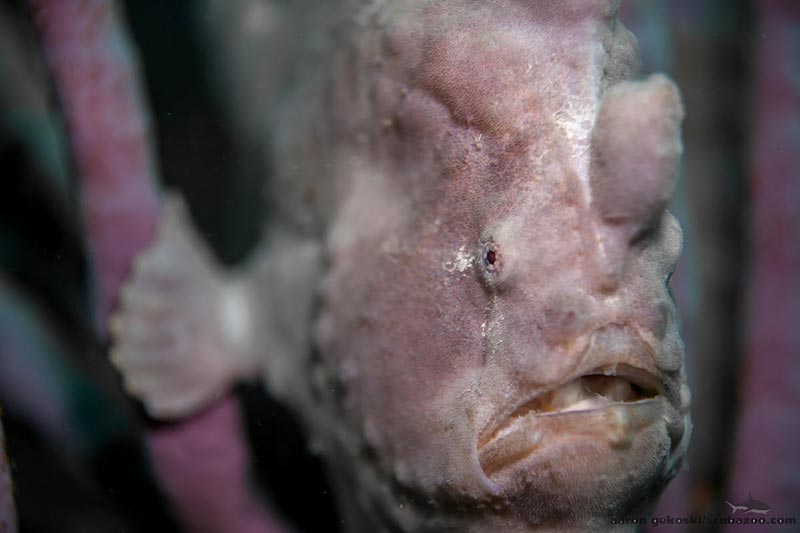

What do you get if you cross your classic paradise island, with a small community of sea gypsies and a heap of frogfish? You get Sibuan, a tiny dollop of loveliness just a short hop, skip and a dive away from Scuba Junkie’s base in Semporna.
Known locally as ‘Battleship Island’ due to its distinct shape, above the waves Sibuan is all palm trees and white sandy beaches, along with a small scattering of huts built by the Bajau Laut. These ‘sea gypsies’ are known for their incredible freediving skills and their children are often found frolicking in the shallows, offering great photo opportunities.
Underwater, Sibuan offers both muck diving and great reefs – most notably at dive site Hawksbill Highway; a blanket of cabbage coral that provides the perfect ampitheatre for turtles and cuttlefish. Plenty of frogfish can be found wallowing in the muck, as well as the usual suspects: snake eels, seahorses, spiny devilfish and more.


Whilst Sipadan grabs most of the diving headlines around here, the diving right off Scuba Junkie’s jetty in Mabul is surprisingly fishy. Dive site Awas plays host to dozens of green turtles - some the largest I’ve ever encountered. On artificial reef structures they endure divers with good grace, whilst wrasse pluck parasites off them.
On and around these structures are broadclub cuttlefish the size of rugby balls, frogfish, schools of snapper, ghost pipefish, mantis shrimp and flamboyant cuttlefish. Easy diving, fabulously fishy - and all located no more than a couple of minutes swim from the jetty: Not. Too. Shabby.
You can see Awas in the following Borneo from Below episode.
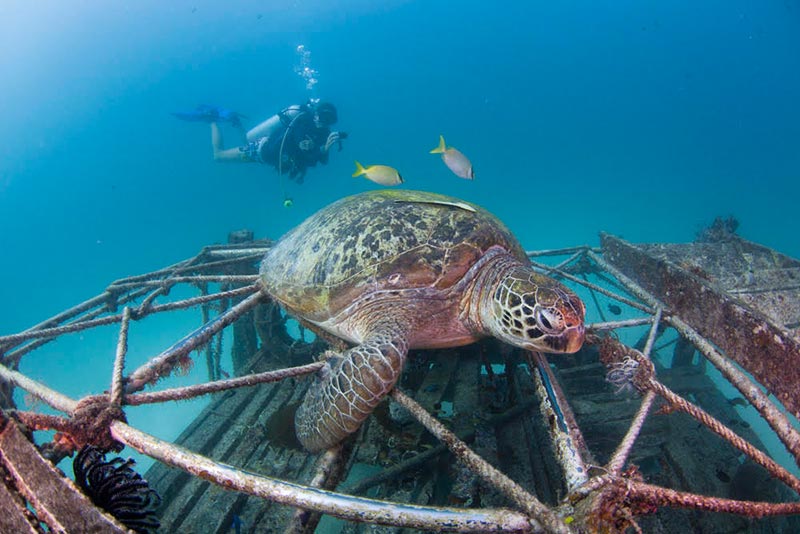

Kapalai, which lies a short 15-minute boat ride from Mabul, is a sandbar with a luxury hotel plonked on top. Kapalai is all about the macro. At around 20m are a series of artificial structures covered in coral and some of the coolest nudibranchs you will ever lay eyes on. One of Scuba Junkie’s DM’s, Nas, even found one with two heads – a world first!
The sloping reef is also one of the best places to spot blue-ringed octopus in the entire region. If you’re lucky you may even catch a glimpse of the resident giant moray eel, Elvis. Elvis’ head is as big as yours.
Elsewhere keep an eye out for waspfish, frogfish, Indian walkmen, leaffish, stonefish and more funky critters. As the sun sets over this delightful sandbar, divers can even see manadarinfish performing their famous ‘love dance’: a mating ritual and one of the most mesmerising experiences a diver will ever have, anywhere.
View the two-headed nudibranch here.
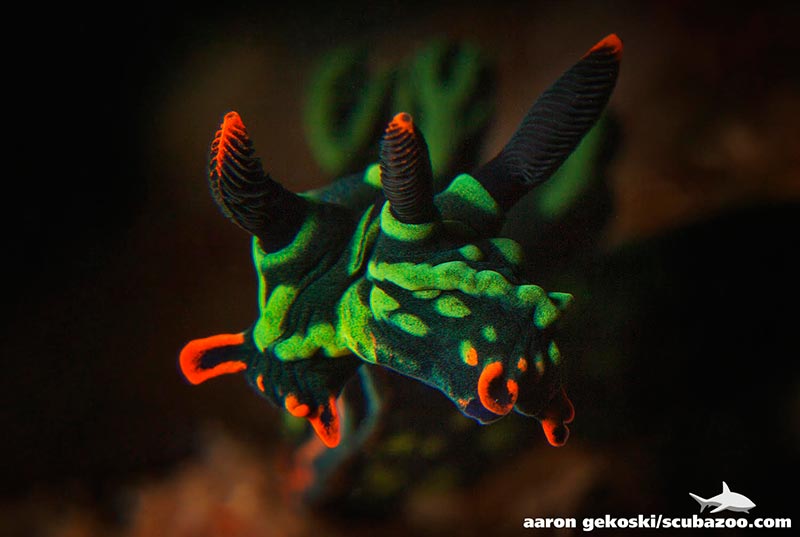

If you enjoy small, jaw-droppingly stunning, seldom-visited sites with water the colour of Frank Sinatra’s eyes, then Mantabuan is the place to dive. Along with its impossibly pretty exterior, this volcanically-formed island is renowned for its black coral: a rare species that’s worth more than gold on the black market. Found at around 25m, these swaying bushes are actually white in colour – the term ‘black’ comes from their skeleton.
Whilst it might not have the variety of fish life that Sibuan does, Joseph has thrown his technioloured dreamcoat over these reefs. Within the coral folds, flaps and fingers lurk plenty of unusual nudibraches. Don’t forget to keep an eye on the blue - in visibility often in excess of 20m - for schools of barracuda and snapper.


Formed as a result of living corals growing on top of an extinct volcano cone, Sipadan was famously referred to as “an untouched piece of art” by Jacques Cousteau. Whilst our oceans are plundered at an alarming rate, rendering once-famous dive destinations fishless and broken, Sipadan has changed little in the 30 years since Cousteau made these remarks.
This, in part, is due to protection offered by the Malaysian authorities who have banned fishing around the island and only hand out 120 dive permits a day. Because of this, divers must book their trip here well in advance.
A shoe-in on lists dedicated to the world’s top dive spots, divers travel from all over to spend time Sipadan’s resident schools of barracuda, bumphead parrotfish, jackfish and sharks, along with giant turtle populations. In diving terms, it doesn’t get much better.
What’s it like to spend a day diving at Sipadan? See here!


To keep up with SZtv’s Borneo from Below, please like: https://www.facebook.com/Scubazoo/
And subscribe to their YouTube channel: https://www.youtube.com/user/ScubazooVideo
Have you noticed that the standard dive advertising, always has beautiful people with perfect bodies. They are 20 something, without an inch of fat on those toned, washboard tummies. The simple truth, is we are not all made that way. There are some people, that can learn to dive, and instantly succeed in staying down for 60 minutes. I was not one of them....
My first dives were between 30-35 minutes, and this continued for many years. The problem being, that when you only get to dive 1-2 weeks a year, it’s hard to improve. What you learn in that time, is countered by the year gap until your next underwater adventure. Also, I wasn’t twenty something, and I certainly didn’t have a washboard tummy!
This was enhanced, by no one actually telling me the secrets. You will see countless posts on breathing techniques, so I won’t bore you with them. These are simple guidelines to getting a longer dive.
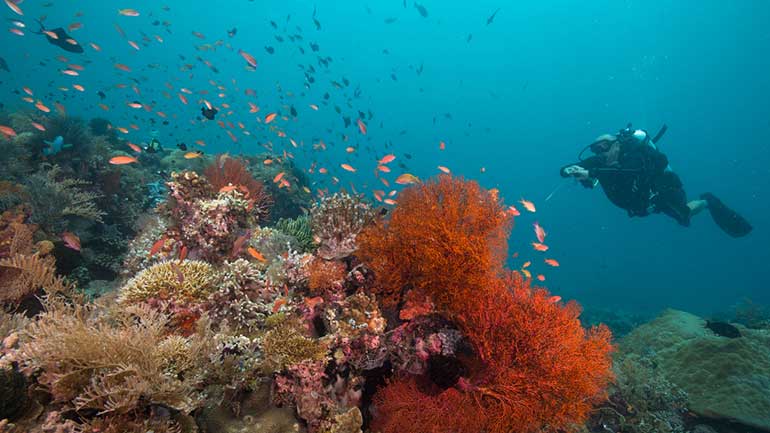

It is so important to be relaxed. As a diver, you want to use as little energy as possible. This obviously increases with more experience. It does help if you are comfortable in the water. Buying your own equipment assists in that. Every dive feels the same. You don’t have to get familiar with a new set up. The same dive buddy or diving with a divemaster you trust, all helps to relieve stress.
When you learn to dive, you are taught the flutter kick. It’s standard, and easy to do. However, it does utilise the biggest muscle groups in the body. The quads, hamstrings and buttocks. These muscles need a lot of oxygen to perform. In turn making you heavier on air. You never see a professional divemaster, or instructor using this kick. We use the frog kick. This uses the smaller muscles on the side of your legs, and calves. Smaller muscle group.... less oxygen needed.
Obviously the deeper you go, the more air you use. But you can help in other ways. Try and anticipate what your divemaster is trying to show you. Be in a position to respond without major movement. It really helps to be behind your divemaster by a few metres, that way you only have to make minor adjustments in position to see what they are trying to show you.
Use the topography to assist you. Look at the terrain a head. If you are swimming against the current, look for obstructions a head. Try and get in their slipstream. The closer you are to the reef, or bottom, the less the current. Now I’m not saying you should endanger the reefs and corals. But as your experience improves, the closer you can get, the less energy you use.
Now don’t attempt all this at once. Don’t expect to turn your dive times around overnight. But do practice. I recommend ten minutes a dive. Then enjoy the rest of your time. Recreational diving is about enjoyment , we do it for fun. However it is healthy to try to continually improve. This leads to more relaxed dives, which leads to longer dives.
Happy Bubbles
Divemaster Simon (bigger than your average divemaster!)
